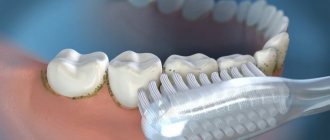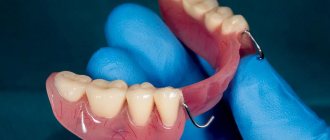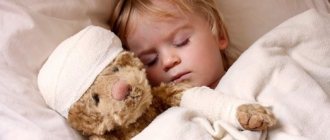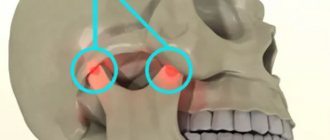Most children have their first teeth at 6-8 months. And when we see that a newborn baby has these “pearls” in his mouth, we are sincerely surprised. Indeed, the so-called natal teeth in newborns occur 1 time per 2-3 thousand crumbs. By the way, this phenomenon occurs much more often in girls than in boys.
Natal teeth are teeth that a baby develops in utero and are already present at birth. As a rule, parents observe two lower front teeth in the child’s mouth at birth. Neonatal teeth appear in a child in the first month of life.
Historians claim that Napoleon Bonaparte, Louis XIV, Julius Caesar, Charlemagne and other great people were born with natal teeth.
Are natural teeth dangerous?
In 95% of cases no. Natal and neonatal incisors are ordinary baby teeth that a child develops in the womb. The main feature of such teeth is that they usually fall out at 3-4 years.
However, natural teeth bring a lot of inconvenience to mother and child. Firstly, during feeding, the mother constantly experiences pain, because the baby unknowingly injures her nipples with his teeth. Secondly, the incisors damage the baby’s gums, frenulum and tongue. The baby develops cracks and ulcers in his mouth, the baby suffers, becomes capricious, and often cries. But, most importantly, if there are ulcers in the mouth, the child can easily get an infection on his own.
In approximately 5% of cases, natal teeth are additional. These supernumerary incisors form in the fetus on top of the baby tooth buds. This means that they will fall out very soon, leaving room for the incisors.
Sign
There is more than one sign about “toothy” babies. If a child is born with one or more teeth, the belief promises a comfortable, happy life and good health. Children who are born with teeth will be strong in life, able to stand up for themselves and fight back. Another sign, on the contrary, promises health problems. If a child was born with teeth, then there will be little strength in the future, since they have gone into the early teeth.
- Interesting read: why does a child grind his teeth in his sleep?
To believe in omens or not, to each his own. And clean air, healthy nutrition, vitamins and parental love will help your baby grow up healthy.
Why do natural teeth appear?
Most dentists associate the appearance of natal teeth with the processes that occurred during pregnancy:
- unbalanced nutrition when carrying a baby;
- superficial presence of rudiments in the fetus;
- infectious diseases of a pregnant woman with high fever;
- excess calcium and vitamin D;
- diseases of the endocrine system;
- long-term exposure to toxins;
- a woman taking illicit drugs in the first trimester of pregnancy;
- congenital pathologies of the fetus;
- unfavorable environment.
Natal teeth are diagnosed immediately at the birth of the child during an examination in the maternity hospital.
It has also been recorded that children are born with natal teeth suffering from the following pathologies:
- Ellis-Van Creveld syndrome. Genetic pathology of the fetus, which is characterized by growth retardation, disproportionate dwarfism and abnormal growth of all types of bone tissue.
- Hallerman-Streiff syndrome. Many anomalies that appear due to disturbances in the visceral mesoderm of the embryo. Dysmorphia of the maxillofacial part of the skeleton.
- Sotos syndrome. A congenital, sporadic disease in which the child grows very quickly. The pathology is also characterized by accelerated development of teeth.
- Craniofacial type of synostosis. Premature closure of cranial sutures, deformation and limitation of the volume of the skull.
- Multiple steatcystoma. A benign neoplasm characterized by multiple cystic nodules on the skin.
- Cleft in the sky. The palatal parts do not fuse, a congenital disease.
- Congenital pachyonychia. A genetic disease that affects the nail plates.
- Robin's syndrome. A disease characterized by underdevelopment of the mandibular bone, palatal clefts and recessed tongue.
Bite
Abnormal bite often causes:
- increased load on individual teeth, which contributes to their rapid destruction or damage to the ligamentous apparatus;
- crowding of teeth, leading to gum inflammation and dental caries.
The hereditary factor is detected in no more than 50% of cases of abnormal structure of the dental system. The remaining 50% is due to the following circumstances:
- artificial feeding;
- formation of bad habits at an early age (sucking pacifiers, fingers, lips, holding pencils or pens in the mouth);
- the habit of sleeping in one position, especially with your hand under your cheek;
- incorrect posture;
- lack of calcium and other trace elements in the body.
In preventing the development of pathological occlusion, the role of parents is great, who should pay attention to the early identification and elimination of provoking factors.
Classification
Natal and neonatal teeth were classified by Veronica Habling. The basis for the maturity of incisors is the quality of dental tissue, as well as the degree of its development.
Today there are four categories of natal elements:
- 1st category. The crown is shaped like a shell. The teeth have no roots, the incisors are barely fixed by the gums.
- 2nd category. Characterized by dense crowns and a very weak root structure. Often the roots of the teeth are completely absent, the tooth is weakly fixed in the alveolus.
- Category 3. The incisal edge of the tooth breaks through the gum slightly. The main part of the tooth is located inside the jaw bone.
- Category 4. The teeth can be easily felt, but are hidden by swollen tissues and are invisible to the eye.
Diagnostics
As we have already said, diagnosis of natal teeth is carried out at the birth of the child. The doctor conducts a full clinical examination of the baby’s condition, evaluates the characteristics of the teeth and determines the cause of their appearance.
During the initial visual examination, the pediatrician assesses:
- mobility of incisors and their hardness;
- dental anatomy - matching the shape, color and size of the teeth;
- presence of root (if possible). If a tooth is mobile, most likely its root system is not developed or underdeveloped. It will most likely fall out on its own within a few weeks.
The doctor also conducts a mandatory examination of soft tissues:
- Examines the surface of the tongue and gum tissue. The pediatrician identifies the presence of granulomatous lesions and inflammation caused by irritation from the cutting edge of the tooth. If there is a risk of infection, the doctor advises not to save the incisors.
- Performs a general examination of the patient to exclude infections and other diseases. If necessary, the doctor prescribes a series of tests for the patient, recommends undergoing diagnostic examinations and obtaining consultations with specialists.
Methods for correction and treatment of anomalies
Treatment depends on the clinical situation and is determined by the doctor after a comprehensive dental examination. Correction of dental abnormalities may include:
- surgical removal of wisdom teeth or supernumerary units;
- prosthetics: for adentia, hypodentia;
- orthopedic correction with a crown, veneer, lumineer: for size anomalies;
- restoration with crowns, composite materials, veneers: for non-standard shapes;
- if the structure of enamel and dentin is damaged, complex therapeutic, orthodontic, orthopedic treatment, enamel mineralization, and drug therapy are prescribed;
- eruption disorders: physiotherapy, massage. Sometimes orthopedic treatment (plates, aligners), removal of a baby tooth (if a permanent tooth has formed underneath it), surgical care (for impacted segments), or orthodontic preparation (system braces) may be required in order to create conditions for stretching the segment retained in the gum.
Malocclusions are most often corrected with fixed orthodontic structures (braces, aligners) in adults. Children are mostly fitted with removable devices.
Indications for removal of natal teeth
Unusual early incisors should be removed if the doctor notices:
- The edges of the teeth are too sharp;
- Significant mobility of teeth (absence and underdevelopment of roots);
- Weakened incisor structure;
- Thin, discolored tooth enamel;
- Irregular shape of “pearls”.
If natal teeth have at least one of the problems listed above, they can injure the soft tissues of the oral cavity and mucous membranes. Moreover, teeth with weak roots can fall out at any time and fall into the respiratory tract, which is dangerous for the baby’s life.
Preservation of teeth
Most often, natal teeth do not have any negative consequences for the child. The baby was just born special. If the parents and the doctor decide to preserve the incisors, it is worthwhile to be attentive to his oral cavity from the very first day of the child’s life.
Early teeth, much more than baby teeth, require careful care and attention. The child should be regularly shown to the dentist to have the oral cavity cleaned of bacteria.
An ideal care product and method for massaging fragile children's gums and, accordingly, natal teeth are Asepta Baby wet wipes, intended for children from 0 to 3 years old. Finger wipes prevent the growth of bacteria in the oral cavity, reduce discomfort during the eruption of subsequent baby teeth and perfectly clean all surfaces of the oral cavity.
So, now you know how to take care of a baby who was born with teeth. Don’t forget that there is a popular saying: if a child is born with incisors, a happy, rich life awaits him. The baby will grow up brave and strong, and will always be able to stand up for himself!
On a minor note
True, not all signs associated with the first tooth are so rosy. There are also the exact opposite. For example, it is believed that if the first teeth grow slowly, painfully and cause big problems for a little man, then this indicates that he will grow up with a quarrelsome character, will be grumpy and intractable.
By the way, this sign is completely connected with real psychology - if a child suffers from teething for a long time, parents will try to compensate for his suffering with gifts, toys and other pleasant things, thanks to which he can get used to it and grow up to be an excessive egoist.
It is also considered a rather bad omen if a baby’s fang erupts first. Such children were often considered dysfunctional, associated with evil spirits, and all sorts of suffering and even death at a young age were predicted for them.
In some countries, for example, Africa, a woman who gave birth to such a child could even be kicked out of the village so that she would not bring misfortune and God's punishment on its inhabitants.
You may also be interested in
CHILDHOOD
Finger wipes from 0 to 3 years ASEPTA BABY
For gentle oral hygiene of babies and massage of gums during the eruption of the first teeth
More about the product
CHILDHOOD
Children's gel toothpaste from 0 to 3 years ASEPTA BABY
Designed for gentle care of baby's gums and baby teeth
More about the product
Doctors' recommendations for painful teething
Dentists recommend paying more attention to the baby during this period and carefully maintaining hygiene, because the child strives to “test everything by heart.” You should also give him rubber teething rings chilled in the refrigerator, silicone toys, or special “teethers” with soft bristles. If the child does not have allergies, then you can give him a decoction of chamomile, valerian or sage. The dose should be checked with your pediatrician.
The dental network offers dental preventive services, including consultations on teething for children. Our specialists are highly qualified and improve their skills in leading Russian and foreign clinics. The pediatric dentist will conduct visual and hardware diagnostics and give recommendations on further actions. We have a system of family and cumulative discounts.
“Smile” branches are located in Moscow within walking distance from metro stations:
- Art. Alekseevskaya (VDNKh district, etc. Mira), address: st. 3rd Mytishchiskaya house 3, building 2;
- Art. Shelepikha, address: Shelepikhinskaya embankment, address: building 34, building 1.
Don't leave your children's dental problems to chance. Our doctors will provide effective, qualified assistance to you and your children. We are waiting for you every day without breaks and weekends.









